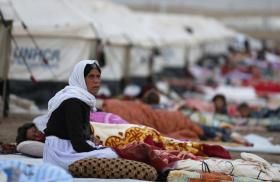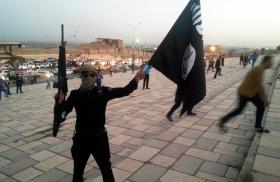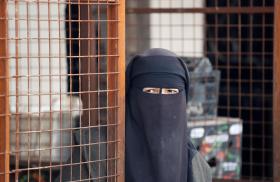
- Policy Analysis
- PolicyWatch 1392
Drug Trafficking and Middle Eastern Terrorist Groups: A Growing Nexus?

Part of a series: Counterterrorism Lecture Series
or see Part 1: U.S. Efforts against Terrorism Financing: A View from the Private Sector
A DEA official shares a briefing on the ties between jihadist groups and illicit narcotics trafficking.
On July 18, 2008, Michael Braun, assistant administrator and chief of operations at the U.S. Drug Enforcement Administration (DEA), addressed a Policy Forum at The Washington Institute. Mr. Braun, a career special agent and a longtime participant in the DEA's counterterrorism efforts, spoke about the nexus between drugs and Middle East terrorist groups and the growing challenge this relationship poses to U.S. national security. The following is a rapporteur's summary of his remarks.
The nexus between drugs and terror is growing at light speed. This is not a new trend -- there have been numerous links identified between drugs and terror over the last twenty-five years. Of the forty-three officially designated foreign terrorist organizations (FTOs), the Drug Enforcement Administration (DEA) has linked nineteen of them to some aspect of the global drug trade, and believes that up to sixty percent of terror organizations are connected with the illegal narcotics trade.
Terrorist organizations have chosen to participate in the narcotics market for several reasons. State sponsorship of terrorism is declining, and the Department of Treasury, Central Intelligence Agency, Immigration and Customs Enforcement, and FBI have done a very good job at identifying private donors and disrupting the flows of terror financing. The United States has worked with its allies and significantly disrupted al-Qaeda's ability to communicate with their cells and nodes around the globe. Partly for this reason, al-Qaeda has shifted from a corporate to a franchise leadership model in recent years.
Terrorist groups, therefore, are increasingly in need of new sources of funds. The drug business fills this need perfectly. The UN estimates that the international drug trade generates $322 billion per year in revenue, making drugs by far the most lucrative illicit activity. According to the UN, revenues from other types of illicit transnational activity, such as arms trafficking and alien smuggling, are small by comparison. Drugs provide many different avenues of revenue, including the taxing of farmers and local cartels, and the provision of security for all aspects of production, trade, and distribution. Terror organizations do not, in general, require massive sums of money for their operations, but must finance training, infrastructure needs, equipping their members, bribing local officials, recruiting, and logistics. The al-Qaeda or affiliate cell that carried out the Madrid train bombing funded that operation in almost its entirety through the sale of illicit drugs.
There are many similarities between a terrorist organization and a global drug cartel. Both oppose nation-state sovereignty, function best in ungoverned spaces, depend on mutual shadow facilitators, have no regard for human rights, rely on the hallmarks of organized crime such as corruption, intimidation, and violence, and are highly sophisticated organizations that operate with the latest technology. Most analysts believe that FTOs copied their decentralized structure of cells and nodes from drug cartels. Both FTOs and drug cartels often rely on the same money launderers and have a capacity to regenerate themselves when dealt a blow, often reemerging in a new or unrecognizable form. The main difference is motivation; drug cartels are motivated entirely by profit, whereas terrorist organizations have political or ideological motivations.
One of the most prominent regions where the drug-terror nexus is at its strongest is the tri-border area in Latin America, where the borders of Brazil, Argentina, and Paraguay join. Both Hamas and Hizballah are active in this region, where it is possible to make a profit of $1 million from the sale of fourteen or fifteen kilos of drugs, an amount that could be transported in a single suitcase. The cost of drugs is far lower in this region and can be resold in other countries for a far greater price. A package of this size does not necessarily attract the notice of an organization like the DEA, which intercepts much larger shipments routinely. Illustrating how profitable the drug trade can be, a drug ledger seized in Afghanistan showed ten months of transactions yielding $169 million from the sale of eighty-one tons of heroin. Whether in Afghanistan or the tri-border area, drugs facilitate massive revenues that go into the pocket of FTOs.
As FTOs become more heavily involved in the drug trade, hybrid organizations are emerging. These hybrids are foreign terrorist organizations that have morphed into one part terrorist organization, one part global drug trafficking cartel. The Taliban and FARC are two perfect examples, and they are, in essence, the face of twenty-first century organized crime -- meaner and uglier than anything law enforcement or militaries have ever faced. They represent the most significant security challenge facing governments worldwide. The DEA has tracked the evolution of drug cartels and terrorist organizations for a long time, and estimates that the Taliban is currently at the organizational level of operations at which the FARC operated ten years ago.
To combat this threat, the DEA is operational in eighty-seven offices in sixty-three countries and now plays an important role in the war on terror. It has briefed more three- and four-star generals and admirals in the last eighteen months than in the last thirty-five years. The Department of Defense estimates that the war on terror will last for another thirty to fifty years, but it lacks the organizational infrastructure and know-how to attack terrorist and insurgent groups that are engaged in global drug trafficking. The Defense Department therefore asks the DEA for advice on how to wage a war that is similar to the war on drugs, and is increasingly becoming a shared fight. With the exception of those U.S. forces in uniform throughout the world, the DEA plays as important a role in the war on terror as any other agency.
The DEA contributes to the war on terror in seven major ways. It undertakes communications intercepts through court orders, and is increasingly using judicial wiretaps that can be used as evidence in courts around the globe. For example, much of the investigation of arms dealer Viktor Bout was supported by wiretaps. The DEA also uses unique, extraterritorial "long-arm" jurisdiction to ensure robust sentencing of individuals around the world. It conducts extraordinary complex undercover operations with foreign counterparts and works in conjunction with its local affiliates to carry out regional operations. Since the mid-1980s, the DEA has focused on attacking and disrupting entire organizations, rather than individuals. It uses human intelligence and confidential sources that it maintains around the world. It has a strong foreign presence and focuses on a financial attack strategy based on a "follow-the-money" approach. In 2007, the DEA seized $3.4 billion from intercepted drug transactions, and it expects to seize $4 billion this year. Every dollar that the DEA seizes is a dollar not in the hands of these transnational terrorist organizations or drug cartels. Many drug and terror organizations share shadow facilitators, so eliminating these facilitators deals a severe blow to both types of organization.
This rapporteur's summary was prepared by Washington Institute research assistants.



